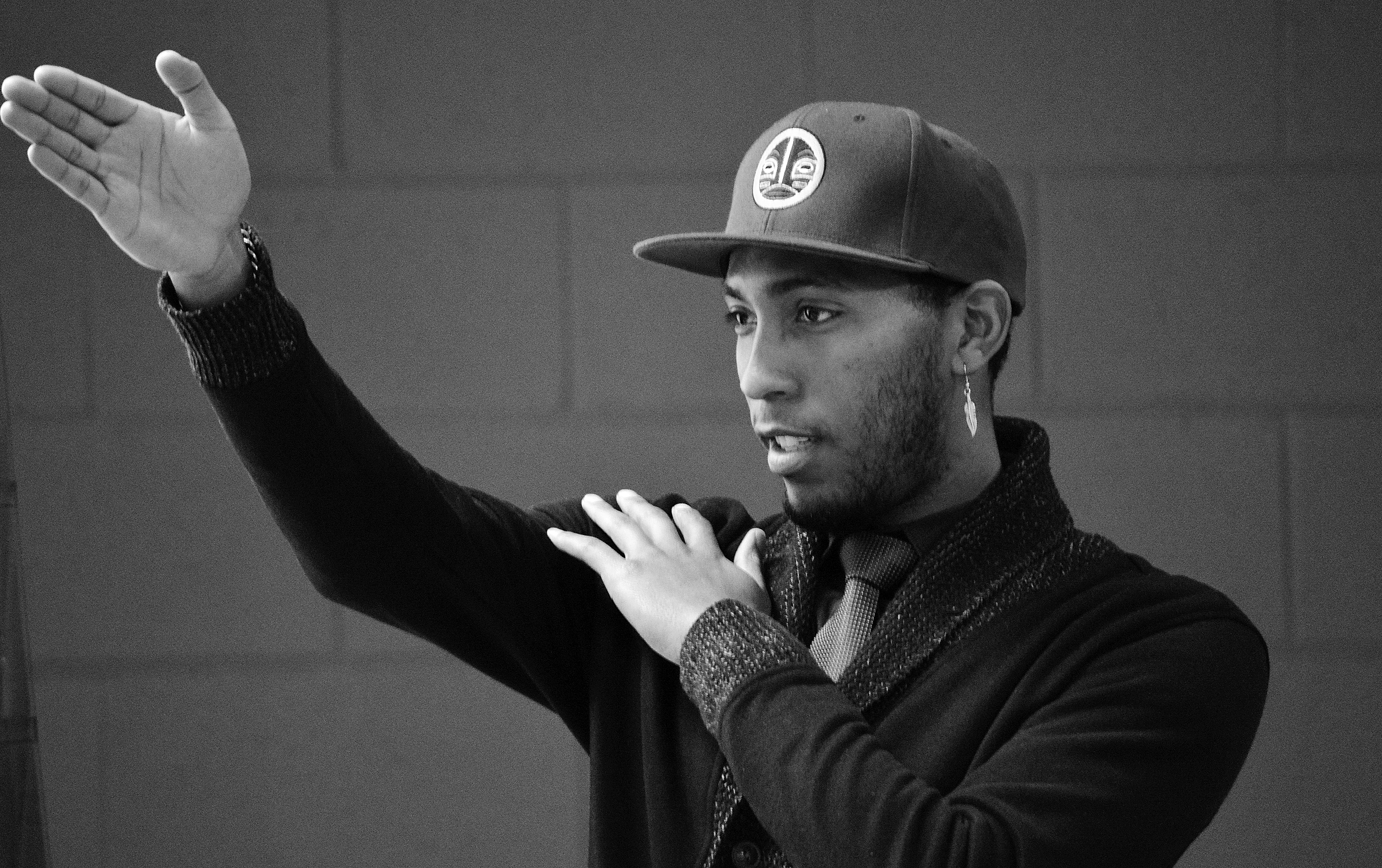We Gon’ Be Alright: Native Americans in Pop Culture

Nyna Nickelson | Correspondent
NC State welcomed Kyle Mays Wabinaw as a part of SAAC Week for his presentation of We Gon’ Be Alright: Indigenous Relations in Pop Culture and Why It Matters.
The night began with the question: “What does #Blacklivesmatters mean to you and this campus?” The audience bustled with ideas and answers from modern day injustices to police brutality to accurate representation.
However, the next question Mays posed: “what does #Nativelivesmatter mean to you” was met with blank stares and puzzlement. One participant stated: “I never really have to think about this.”
Wabinaw and several other members of the NCSU Native American Student Association (NASA) educated the audience on the statistics of crime on native peoples and issues that are prevalent today in the diverse cultures. He touched on the relationship between native peoples and the black community and debunked the myth that minorities cannot appropriate the culture of other minorities.
Wabinaw used the depiction of native peoples in pop culture to call out our own ignorance; he called our attention to the absurdities of Andre 3000’s 2004 Grammy performance that was equipped with UFO tepees and dancers clad in vibrant green feathers and fringe. This video left the audience with the age old question of whether to laugh or cry.
He also pointed out the clear cultural misappropriation of Pharrell’s headdress cover on Elle and the blatant racism entangled the songs of Disney’s Peter Pan. Finally he highlighted the snippet of the representation of Mardi Gras Native Americans in Beyonce’s “Formation.”
All of these examples showcase stereotypes and watered down interpretations of native cultures. He made it clear that in reference to the cultures of native peoples, “cultures” should always be plural because of the diverse traditions that are unique to each tribe.
The lesson to take from the event is to recognize that native peoples exist and are active in today’s society. Mays pressed the audience to remember that native peoples do not only live on reservations but also in urban areas.
He opened the audience’s eyes to Native hip hop artists such as, Eekwol, Frank Waln and Nataanii Means. These artists are actively attempting to greaten the amount of Native cultures representation within the mainstream culture.
He ended the evening with allowing the audience to discuss ways in which we can support native peoples. Some of these ideas were supporting local businesses owned by native peoples, renounce stereotypes about native peoples and cultures, support the recruiting of native peoples in colleges and higher education, boycott brands that steal designs and textiles from Native cultures (like Urban Outfitters) and of course listening to indigenous rappers.
When asked what one thing did he want his audience to take from the event, Kyle Mays Wabinaw said, “Native Peoples exist in the present and that hip hop is one way that they do exist.”